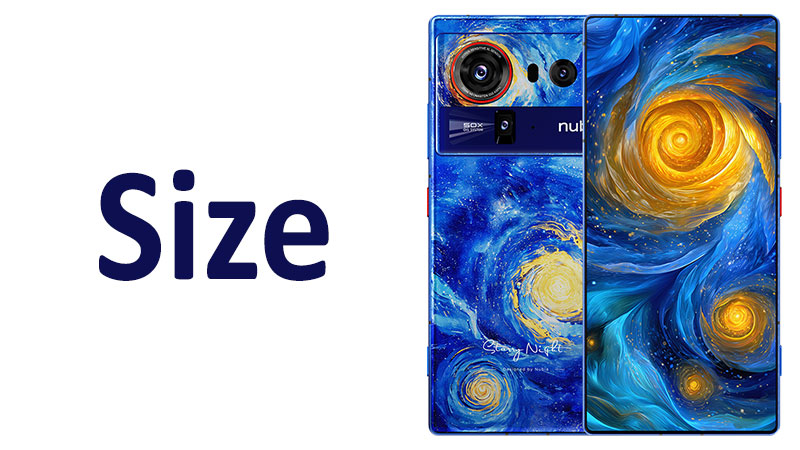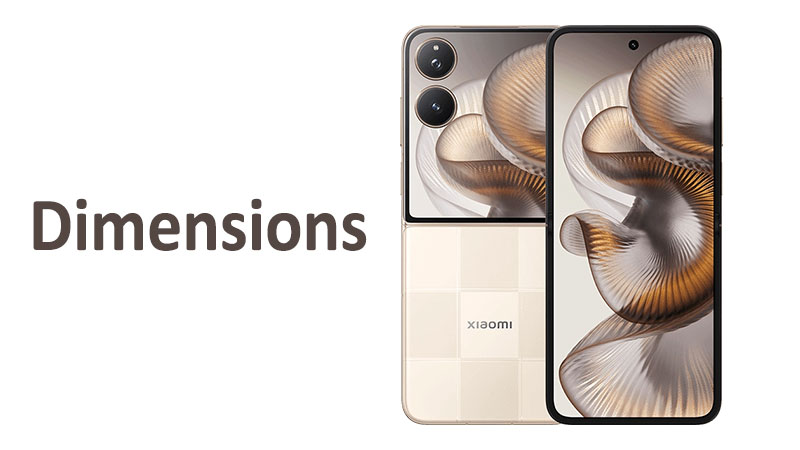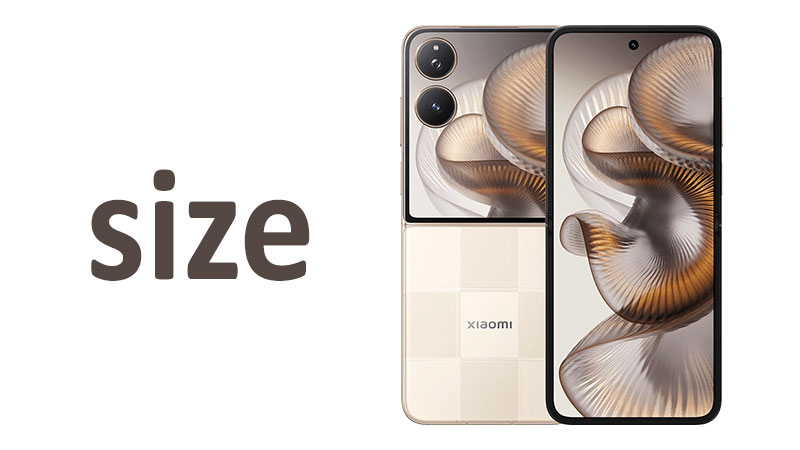The ZTE nubia Z80 Ultra size is a crucial factor for potential buyers. Device dimensions define the entire user experience. They dictate comfort, portability, and viewing immersion. The Z80 Ultra is positioned as a powerful, high-end flagship. Its physical footprint reflects its advanced internal hardware. This comprehensive review dissects every aspect of the phone’s size. We analyze the screen specifications and physical dimensions in detail. Furthermore, we provide essential comparisons against key competitors. Understanding these metrics helps consumers make an informed purchase decision. Size and ergonomics are central to the phone’s design philosophy.
Screen Specifications: The 6.85-inch Canvas
The display is the focal point of the ZTE nubia Z80 Ultra size. It features an expansive screen measuring 6.85 inches diagonally. This immense size immediately places the device in the large-format smartphone category. This large display is a clear benefit for media consumption. Watching movies and streaming video becomes a highly immersive experience. The extended screen real estate enhances visual engagement significantly.
The screen’s sheer size elevates the mobile gaming experience too. Gamers gain a larger view of the action and more control space. This reduces the clutter of on-screen buttons and inputs. The increased visibility provides a competitive advantage in many fast-paced titles. ZTE specifically targets this demographic with its Ultra series phones. They prioritize maximum display area for high-performance use cases.
Active Screen Area: 113.7 cm²
The total active display area is a key metric. The Z80 Ultra offers 113.7 cm² of usable screen surface. This square area better represents the actual viewing space than the diagonal measurement. Compared to standard 6.5-inch phones, this is a substantial increase. This large area dramatically improves productivity tasks. Users can view documents and spreadsheets with greater ease. Complex apps with dense information display more comfortably.
This expansive surface allows for more effective split-screen multitasking. Running two full applications side-by-side feels less cramped. It is a genuine productivity booster for professionals. This large surface also aids in content creation and editing. Photo and video editing tasks benefit from the precise, spacious workspace. The screen area confirms the phone’s status as a top-tier media device.
Visual Experience and Aspect Ratio
The 6.85-inch display likely uses a slightly unusual aspect ratio. This design choice often complements the phone’s overall aesthetic and length. A taller aspect ratio makes the phone easier to hold. It also provides more vertical content when browsing social media. The aspect ratio is optimized for modern cinematic content. Many popular movies are filmed in similar ultra-wide formats. This minimizes the presence of black bars above and below the video.
The large screen size enhances the phone’s impressive display technology. The colors look vibrant and blacks appear deep and rich. High refresh rates become more impactful on such a large canvas. Motion appears fluid and smooth across the entire screen surface. The viewing experience is undeniably premium due to the combination of size and quality. Consumers prioritize this large, high-fidelity visual output.
Physical Footprint: Z80 Ultra Dimensions Decoded
The physical dimensions define the ZTE nubia Z80 Ultra size in reality. The overall chassis measures 164.5 x 77.2 x 8.6 mm. These measurements clearly indicate a large, substantial device. They are crucial for assessing the phone’s real-world handling and feel. The dimensions reflect a design built for performance and internal space. The device is both tall and relatively thick compared to some rivals.
The height of 164.5 mm (6.48 inches) makes this a very long device. This height is necessary to accommodate the 6.85-inch screen. Reaching the top of the display with one hand is often impractical. Most users will rely on a two-handed grip for navigation. This is a standard characteristic of modern large-screen flagship phones. The extreme height ensures maximum vertical content viewing.
Width and Grip Analysis: 77.2 mm
The width of 77.2 mm (3.04 inches) contributes significantly to handling comfort. It is a key dimension for determining how securely a user can grip the phone. This width is on the larger side, but it is not excessively wide. ZTE has managed the width effectively relative to the screen size. This helps maintain a degree of comfortable grip security. Users with smaller hands may still find the width challenging to manage.
The phone’s overall balance is affected by this width measurement. A balanced device feels less likely to tip out of the hand. The width helps distribute the phone’s internal weight evenly. However, the width still necessitates a wider hand span for secure holding. Users should test the grip before committing to the large size. It is a clear design choice favoring screen size over simple portability.
Thickness and Ergonomics: 8.6 mm
The thickness is a notable feature of the ZTE nubia Z80 Ultra size. It measures 8.6 mm (0.34 inches). This measurement is thicker than many ultra-slim flagship phones. Many competitors aim for thicknesses below 8.0 mm for a sleek feel. The Z80 Ultra’s 8.6 mm thickness suggests a purposeful engineering decision. This extra thickness often accommodates specialized internal components.
It likely provides necessary space for a large-capacity battery. A bigger power cell is essential for sustaining the large screen and powerful processor. Furthermore, it creates room for sophisticated cooling technology. Gaming phones especially require robust thermal management solutions. The 8.6 mm thickness is a direct benefit to performance and endurance. While it feels less sleek, it enhances durability and internal capability. The thickness contributes to a solid, reassuring in-hand feel.
Screen-to-Body Ratio and Bezel Management
The Z80 Ultra achieves a screen-to-body ratio of approximately ~89.5%. This is a high ratio, meaning the display occupies a large proportion of the front panel. However, it is slightly lower than some bezel-less rivals. This 89.5% figure is likely due to the phone’s specialized camera technology. ZTE uses an under-display camera system for an uninterrupted screen.
This under-display camera (UDC) technology is complex. It often requires slightly wider bezels for seamless integration. The 89.5% ratio is a trade-off for a truly full-screen experience. The user gains an uninterrupted view, free of notches or punch-holes. This visual continuity is a massive advantage for gaming and media. It creates a cleaner, more immersive viewing environment.
The Full-Screen Visual Continuity
The full-screen visual experience is a key selling point for the Z80 Ultra size. There are no distracting elements breaking the display surface. This uninterrupted view is particularly valuable to gamers. It removes common visual obstructions near the top of the screen. The entire 6.85 inches of display is dedicated to content. This provides a level of immersion few competitors can match.
The UDC technology is still evolving in the industry. The Z80 Ultra’s implementation aims for maximum invisibility and seamlessness. This design choice sacrifices a marginal amount of screen-to-body ratio. For many users, this trade-off is entirely worthwhile. The visual continuity enhances the viewing experience significantly. It showcases the future of bezel-less smartphone design beautifully.
Impact on Hand Grip and Accidental Touches
The screen’s extensive coverage affects the overall handling experience. Reduced bezels make the phone look impressive. However, it also increases the risk of accidental palm touches. When gripping the phone, the user’s hand can easily contact the screen edge. This can trigger unintended actions or ruin a gaming session. ZTE mitigates this with advanced edge rejection software.
The software intelligently ignores touches near the screen’s edges. This allows users to grip the phone securely without input errors. The balance between screen size and touch rejection is delicate. The Z80 Ultra manages this trade-off effectively. It ensures the vast screen remains usable and responsive during heavy use. This is a critical software feature complementing the large size.
Specialized Comparison: Z80 Ultra vs. Predecessor
We compare the ZTE nubia Z80 Ultra size to its predecessor, the nubia Z70 Ultra. This analysis highlights the brand’s evolving design strategy. The Z70 Ultra likely featured a slightly smaller screen. For example, it might have been 6.7 inches or less. This suggests the Z80 Ultra represents an upscaling trend. ZTE commits to providing an even larger viewing area for its flagship.
The previous model may have been slightly shorter and possibly narrower. However, the thickness is where the most notable comparison lies. If the Z70 Ultra was, for example, 8.2 mm thick, the Z80 Ultra’s 8.6 mm represents an increase. This added thickness is not arbitrary. It confirms the integration of more powerful or larger components. This includes a bigger cooling system or enhanced battery capacity. The Z80 Ultra is a more performance-focused, physically substantial device.
Generational Design Philosophy
The generational shift emphasizes performance over ultimate thinness. The Z70 Ultra was likely a sleeker, more general-purpose flagship. The Z80 Ultra fully embraces the “Ultra” moniker. It opts for a design that supports sustained peak performance. The increased thickness of 8.6 mm is a design choice. It allows the phone to handle intense gaming loads more effectively.
The screen size increase from a potential 6.7 inches to 6.85 inches is also strategic. It keeps pace with the demands of the media and gaming markets. Users expect a flagship phone to deliver maximum screen real estate. ZTE responds to this demand with a subtle but definite size increase. The Z80 Ultra is built to be a powerhouse, and its dimensions confirm this. It sacrifices minor portability for major performance gains.
Specialized Comparison: Z80 Ultra vs. Flagship Competitors
The ZTE nubia Z80 Ultra size competes directly with the largest flagship phones globally. This comparison helps define its unique position in the market.
Versus the Samsung Galaxy Ultra Equivalent
Samsung’s large Ultra models typically feature screens around 6.8 inches. The Z80 Ultra is negligibly larger at 6.85 inches. The difference is minimal but positions the nubia as slightly more expansive. Samsung models often feature a slightly taller aspect ratio. However, the Z80 Ultra’s thickness is a key differentiator. At 8.6 mm, the Z80 Ultra is notably thicker than its Samsung rival. This means the Z80 feels more robust and perhaps less sleek in the pocket.
The primary advantage of the Z80 Ultra is the uninterrupted display. The under-display camera offers a visual experience Samsung’s punch-hole cameras cannot replicate. The Samsung model, however, usually boasts a higher screen-to-body ratio. This is due to more aggressive bezel trimming. The choice here is between a marginally higher screen-to-body ratio versus a visually seamless display.
Versus the Apple Pro Max Equivalent
Apple’s largest Pro Max phones traditionally offer a 6.7-inch display. The Z80 Ultra, at 6.85 inches, provides a significantly larger viewing area. The difference in screen size is immediately noticeable. Apple phones often feature a boxier design and generally thicker dimensions. This is due to their camera bumps and construction materials.
However, the Z80 Ultra’s 8.6 mm thickness is comparable to, or even slightly thicker than, the Apple equivalent. The Z80 Ultra’s height (164.5 mm) makes it a very tall device. The Apple Pro Max is often more manageable in height. The nubia’s sheer size advantage appeals to users prioritizing maximum screen over pocketability. The Z80 Ultra is a clear winner for screen enthusiasts.
Versus a Key Gaming Phone Competitor
ZTE often competes with dedicated gaming phones. These rivals typically prioritize thickness for cooling and large batteries. They often feature similar or larger screen sizes, sometimes exceeding 7.0 inches. The Z80 Ultra’s 8.6 mm thickness is moderate for a performance device. Some gaming phones push thickness well over 9.0 mm for active cooling.
The Z80 Ultra balances power with a relatively sleek design. Its 89.5% screen-to-body ratio is strong for a gaming phone. Many rivals compromise bezels to house advanced cooling vents. The Z80 Ultra delivers a high-performance profile without excessive bulk. It stands as a refined, powerful compromise in the gaming sector. The size is optimized for long-duration, high-intensity gaming sessions.
Pros and Cons: The Z80 Ultra Size Dilemma
The ZTE nubia Z80 Ultra size presents a clear set of advantages and disadvantages. Buyers must weigh these factors carefully before purchasing.
Advantages of the Large Display and Sturdy Build
The size directly benefits the phone’s core functions. The 6.85-inch screen offers industry-leading immersion for all media. The full-screen experience, thanks to the UDC, is a significant plus. The large screen enhances multitasking and productivity applications. The dimensions of 164.5 x 77.2 mm provide a solid, secure platform. The 8.6 mm thickness allows for a large battery and superior cooling. This thicker chassis improves the phone’s overall structural durability. The substantial size contributes to a premium, capable feel.
Disadvantages for Portability and Handling
The large physical footprint creates ergonomic challenges. One-handed use is extremely difficult due to the 164.5 mm height. The phone’s size restricts pocketability in most standard clothing. This necessitates carrying the phone in a jacket or bag. The 8.6 mm thickness, while beneficial for hardware, adds noticeable bulk. Users may experience hand fatigue during extended gaming or video sessions. The sheer mass of the phone also increases the risk of damage if dropped. This large size requires a deliberate commitment to two-handed operation.
Essential Buying Guide: What You Must Know
Prospective buyers should approach the ZTE nubia Z80 Ultra size with clear expectations. This device is an absolute powerhouse for media and gaming. It is not built for simple, one-handed portability. The 6.85-inch display is the hero feature. You must be willing to fully utilize this expansive screen.
Consider the thickness and height carefully. The 164.5 x 77.2 x 8.6 mm footprint is significant. This phone will feel large in your hand and pocket. Gamers and content creators will find the trade-off worthwhile. If you prioritize portability and lightness, this phone is probably too big. The uninterrupted screen due to the UDC is a unique visual advantage. This feature enhances the experience for full-screen content. You should also factor in the likely need for a secure external grip. This helps manage the phone’s considerable dimensions.
Conclusion
The ZTE nubia Z80 Ultra size is an unapologetic statement of flagship performance. The phone embraces a large form factor to deliver maximum display and power. The 6.85-inch screen and ~89.5% screen-to-body ratio create an intensely immersive viewing environment. This is further enhanced by the seamless, uninterrupted display technology.
The physical dimensions of 164.5 x 77.2 x 8.6 mm confirm its robust, power-user design. The 8.6 mm thickness enables essential performance features like advanced cooling. While portability and one-handed comfort are compromised, the gains in media consumption and gaming are substantial. The Z80 Ultra is an ideal choice for users who demand the largest, most feature-rich screen available. It is a powerful device built for performance, not simple pocketability.
Frequently Asked Questions (FAQ)
What is the exact screen size of the ZTE nubia Z80 Ultra?
The screen size is 6.85 inches diagonally.
What are the precise physical dimensions of the nubia Z80 Ultra?
The dimensions are 164.5 x 77.2 x 8.6 mm (6.48 x 3.04 x 0.34 in).
Does the Z80 Ultra have a high screen-to-body ratio?
Yes, the phone has a high screen-to-body ratio of approximately 89.5%.
Is the Z80 Ultra thicker than average flagship phones?
Yes. At 8.6 mm, it is thicker than many rivals, benefiting cooling and battery size.
Is the screen size better for gaming or general use?
The 6.85-inch screen is significantly better for immersive gaming and media consumption.



